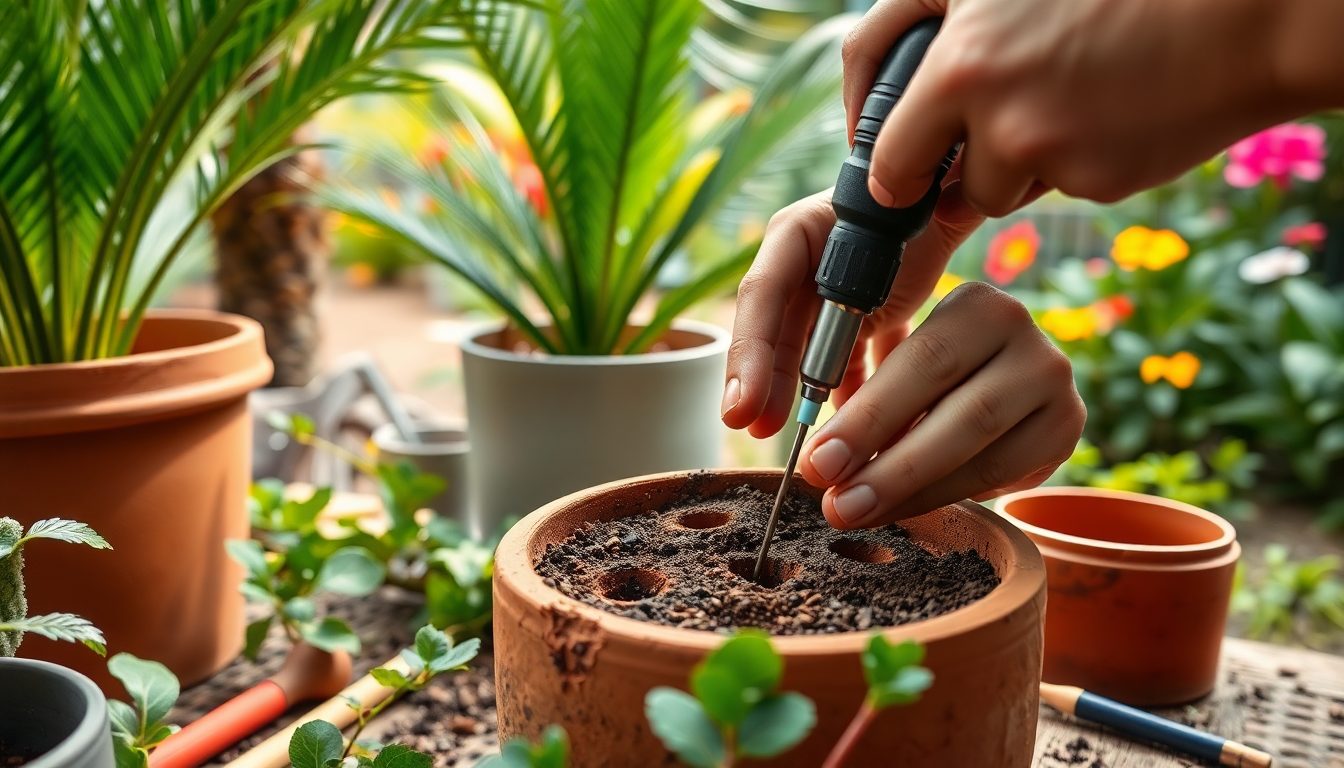As the sun rises over the bustling city of Bangalore, the team at Idyl, your one-stop-shop for all things gardening, is gearing up to help green-thumbed enthusiasts across the city keep their plants healthy and happy. Today, we're diving deep into the importance of proper drainage for clay pots, a crucial aspect of maintaining the vitality of your indoor and outdoor greenery.
Understanding the Role of Drainage in Clay Pots
Clay pots are a popular choice for urban gardeners in Bangalore, as they offer a classic, rustic aesthetic and excellent breathability for plant roots. However, their porous nature also means that proper drainage is essential to prevent waterlogging and root rot. When water accumulates in the bottom of a clay pot, it can lead to a host of issues, from stunted growth and yellowing leaves to the dreaded fungal infections that can devastate your prized plants.
The Dangers of Waterlogged Soil
Overwatering is a common mistake made by even the most experienced gardeners, and it can be particularly problematic when it comes to clay pots. When the soil in a clay pot becomes waterlogged, the roots are deprived of the oxygen they need to thrive. This can lead to root rot, a condition where the roots literally begin to decay, unable to absorb the necessary nutrients and water for the plant to survive.
Promoting Healthy Root Growth
Proper drainage not only prevents waterlogging but also encourages robust root development. When the soil in a clay pot is well-aerated, the plant's roots can spread out and explore the entire volume of the pot, accessing the nutrients and moisture they need to grow strong and healthy.
Mastering Clay Pot Drainage
Ensuring optimal drainage in your clay pots is a straightforward process that can make all the difference in the health and longevity of your plants. Here are the key steps to follow:
Step 1: Choose the Right Pot
When selecting a clay pot, look for one with adequate drainage holes at the bottom. Ideally, there should be at least one large hole, or several smaller ones, to allow excess water to escape.
Step 2: Add a Drainage Layer
Before filling your clay pot with soil, create a drainage layer at the bottom. This can be done by adding a 1-2 inch layer of gravel, pebbles, or even broken pieces of terracotta. This layer helps to create a space for water to accumulate and slowly drain out, preventing the soil from becoming waterlogged.
Step 3: Use the Right Soil Mix
When potting your plants, choose a well-draining soil mix specifically formulated for container gardening. These mixes often contain a blend of compost, perlite, and other amendments that help to improve drainage and aeration.
Step 4: Monitor Soil Moisture
Regularly check the soil moisture in your clay pots, and water only when the top inch or two of soil has dried out. Overwatering is a common issue, so it's important to strike the right balance between keeping the soil moist and preventing waterlogging.
Step 5: Consider Raised Planters
For gardeners in Bangalore's HSR Layout, where the soil can be particularly dense and clay-heavy, raised planters can be a game-changer. These elevated containers allow for even better drainage and air circulation around the roots, helping to prevent the issues that can arise from poorly draining soil.
Troubleshooting Drainage Issues
Despite your best efforts, you may still encounter drainage problems with your clay pots. Here are some common issues and how to address them:
Clogged Drainage Holes
Over time, the drainage holes in your clay pots can become blocked by soil, debris, or even plant roots. Use a sturdy tool, such as a metal skewer or a small trowel, to clear the holes and restore proper drainage.
Slow Drainage
If water is taking a long time to drain out of your clay pots, it could be a sign that the drainage layer is insufficient or the soil mix is too dense. Try adding more gravel or perlite to the mix, or consider repotting the plant into a larger container with a more robust drainage system.
Root Rot
If you suspect that your plant is suffering from root rot due to poor drainage, act quickly. Carefully remove the plant from the pot, inspect the roots, and trim away any that are brown, mushy, or discolored. Repot the plant in fresh, well-draining soil and monitor it closely for signs of recovery.
By mastering the art of clay pot drainage, you'll be well on your way to keeping your plants healthy, vibrant, and thriving in Bangalore's urban landscape. Remember, proper drainage is the foundation for a successful container gardening experience, and with the expert guidance of Idyl, you'll be able to create a lush, verdant oasis right in your own backyard or balcony.
So, whether you're a seasoned gardener or just starting your green journey, head to Idyl today and let us help you unlock the full potential of your clay pots. With our wide selection of plants, fertilizers, and gardening tools, coupled with our expert advice, you'll be well on your way to cultivating a thriving, low-maintenance garden that's the envy of your neighborhood.


0 comments